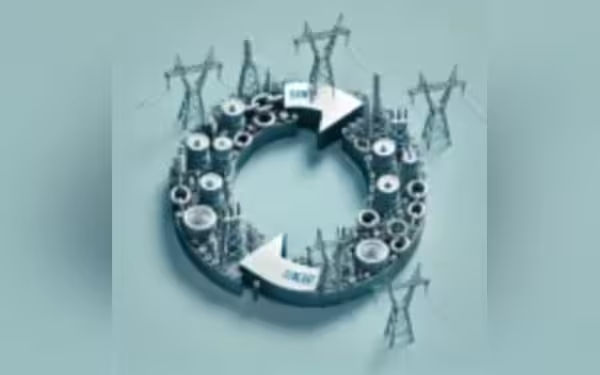Saturday, November 16, 2024 07:50 PM
Circular Debt in Pakistan's Power Sector Projected to Reach Rs2.8 Trillion
- Circular debt expected to hit Rs2.8 trillion by FY25.
- Electricity tariffs increased by 51% in July.
- Government plans Rs381 billion in subsidies to manage debt.
 Image Credits: pakistantoday
Image Credits: pakistantodayPakistan's power sector faces a circular debt crisis, projected to reach Rs2.8 trillion despite a 51% tariff hike.
The power sector in Pakistan is facing a daunting challenge as the circular debt is projected to reach a staggering Rs2.8 trillion by the end of the fiscal year 2024-25. This alarming figure comes despite a significant 51% increase in electricity tariffs implemented in July. The Ministry of Energy has revealed that the gross addition to the circular debt is expected to hit Rs417 billion in FY25, raising concerns about the sustainability of the power sector.
As of June, the circular debt stood at Rs2.383 trillion, surpassing the limits set by the International Monetary Fund (IMF) and the federal cabinet's Circular Debt Management Plan for 2023-24. In an attempt to manage this escalating debt, the government plans to allocate Rs381 billion in subsidies, aiming to cap the debt at Rs2.42 trillion by June 2025. However, the Power Division has struggled to meet its targets, consistently falling short of the goals established by both the IMF and the cabinet.
The average cost of electricity for residential and commercial consumers has now risen to between Rs64 and Rs72 per unit, which includes various taxes and surcharges. The Ministry of Energy's Circular Debt Management Plan anticipates that the debt will increase by Rs245 billion, reaching Rs2.63 trillion by the end of the first quarter of FY25 (July-September). This rise is primarily attributed to low subsidy payments, which are estimated to be only Rs12 billion for the quarter.
Looking ahead, the debt is projected to exceed Rs2.7 trillion by December, with an additional Rs330 billion expected in the first half of the fiscal year. By March 2025, the circular debt could peak at Rs2.8 trillion. Although the Ministry of Finance is expected to inject Rs381 billion in subsidies to help reduce the debt to Rs2.42 trillion by the end of FY25, there will still be a net addition of Rs36 billion to the overall debt.
Last fiscal year, despite assurances to prevent any increase in the circular debt stock, the debt grew to Rs2.383 trillion by June. This occurred even after a tariff increase of Rs8 per unit and substantial subsidies were put in place. The situation highlights the ongoing struggle within Pakistan's power sector, where rising costs and inadequate subsidy payments continue to exacerbate the circular debt crisis.
The persistent rise in circular debt poses a significant threat to Pakistan's economic stability and energy security. As the government grapples with these challenges, it is crucial for policymakers to explore sustainable solutions that not only address the immediate financial concerns but also pave the way for a more resilient power sector in the future. The path forward will require a careful balance of tariff adjustments, subsidy allocations, and strategic investments to ensure that the power sector can meet the needs of its consumers without falling deeper into debt.













